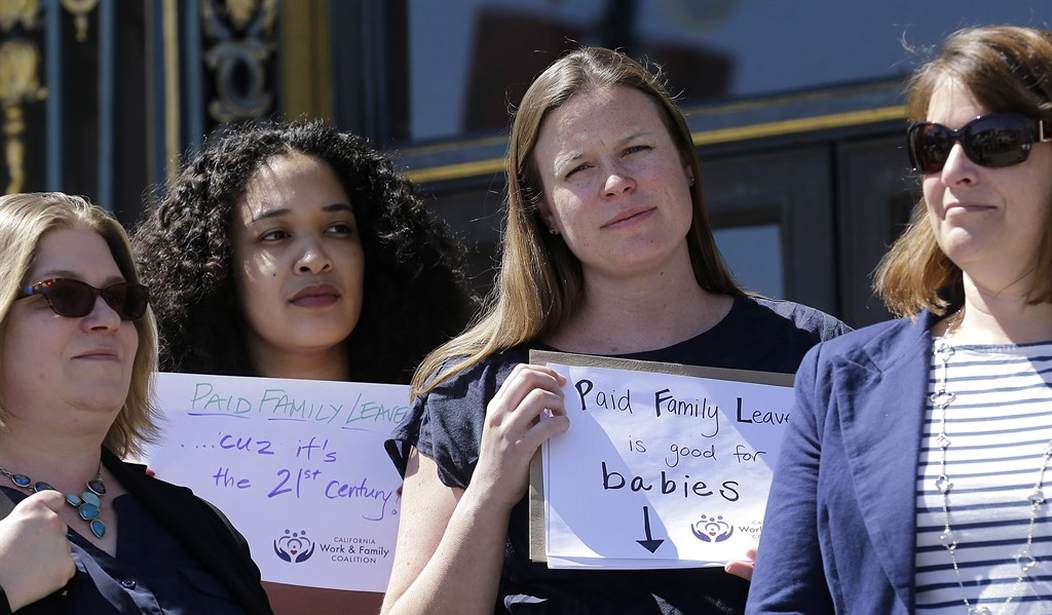The nonsensical coverage of the debate over paid leave continues. Apparently, opposing a federal paid-leave program is the equivalent of being anti-family or pro-suffering, or so we're told. We rarely get information about the full consequences of such a policy.
What kinds of employment leave options do workers use the most? Who exactly doesn't have paid leave currently? Are there legitimate reasons for an employer not to provide it? Or, would a government program target only those workers who do not currently have employer-provided paid leave? These are some of the questions that are rarely asked by those who insist that our government impose a sweeping new program.
Let me try. On average, 15% of workers will take paid family or medical leave annually. As the Heritage Foundation's Rachel Greszler noted in congressional testimony, "Surveys show that virtually all workers who have a need for leave take it, and nearly three out of every four who take leave receive full or partial pay."
Considering the media's general coverage of the issue, I wouldn't blame you for not knowing this fact.
In recent years, most of the attention has gone to parental leave. However, you might not know that this is only one of four different types of leave options available to workers. While parental leave is the easiest to plan for, as Greszler notes, "(m)ore than half of all leaves are taken by workers based on their own medical needs, with the remaining quarter taken by workers to care for family members. Many of those leaves can be unpredictable and require varying lengths of leave."
Recommended
Of course, not all workers have access to paid leave. But that's unsurprising. Paid-leave benefits aren't free, no matter who formally provides them. When employers provide this benefit, employees receive less take-home pay than they otherwise would. Some folks may prefer to have paid leave in their benefits, but many don't. Meanwhile, a federal program wouldn't be free either, as it would be paid for with a payroll tax.
Studies show that support for mandated paid leave drops when employees, including many lower-paid workers, find out what it costs them in take-home pay.
Further, while it's expensive, a federal program won't actually help many workers who currently do not have access to paid leave. That's because most of them are self-employed, are employed by very small companies, or are in temporary and part-time jobs. For instance, state-level data show that only a small share of lower-income workers tends to use state paid-leave programs. Even if a person is eligible, the costs (both from payroll tax and administration) are too high for the benefits, especially if the program provides less than 100% of the wages and takes a few weeks to provide a payment.
The issue is different for self-employed workers. There are about 25.7 million small firms with no employees (sole proprietorships), and more than 9.4 million independent workers, most of whom are sole proprietors. While these workers could sign up for disability insurance to get paid-leave benefits, many of them don't. The insurance is an up-front cost for a benefit they may never use.
If state paid-leave plans are any indication, having a federal program won't change much. In New York, for instance, independent contractors must opt into the state program and start paying in within the first 26 weeks of starting their business. If they don't, they will need to pay in for two years before accessing benefits. Other states have fewer requirements, but the cost is generally not worth the benefit.
The bottom line is that most workers already have paid leave, and their benefits are often much better and more flexible than those provided by government. Unfortunately, a federal paid-leave program wouldn't help most low-skilled workers. And for independent contractors, their costs would go up significantly for a limited benefit.

























Join the conversation as a VIP Member